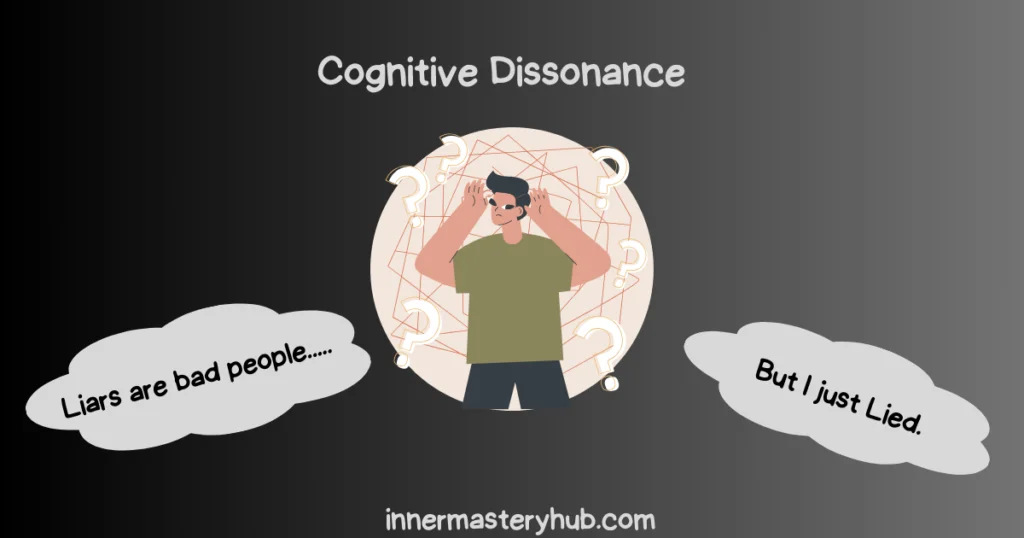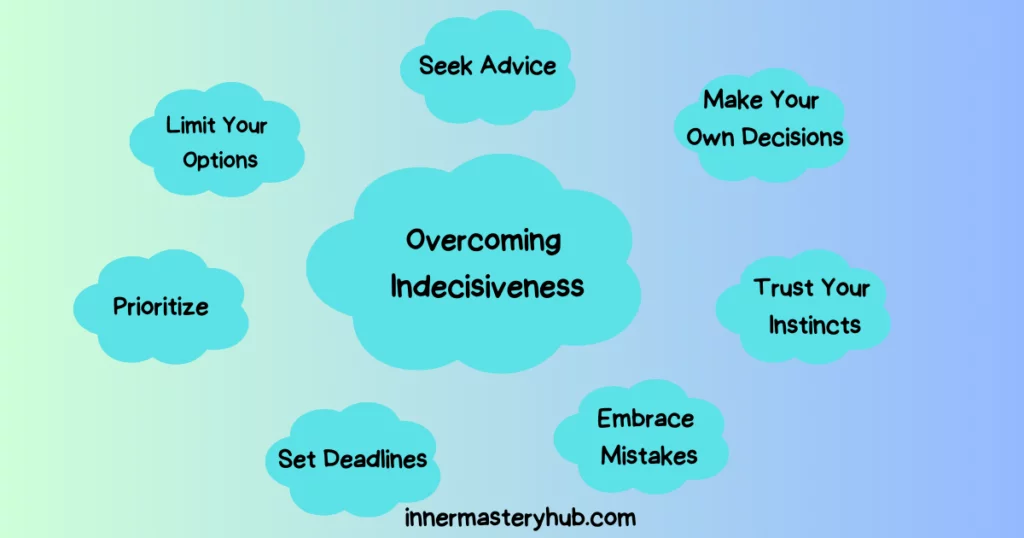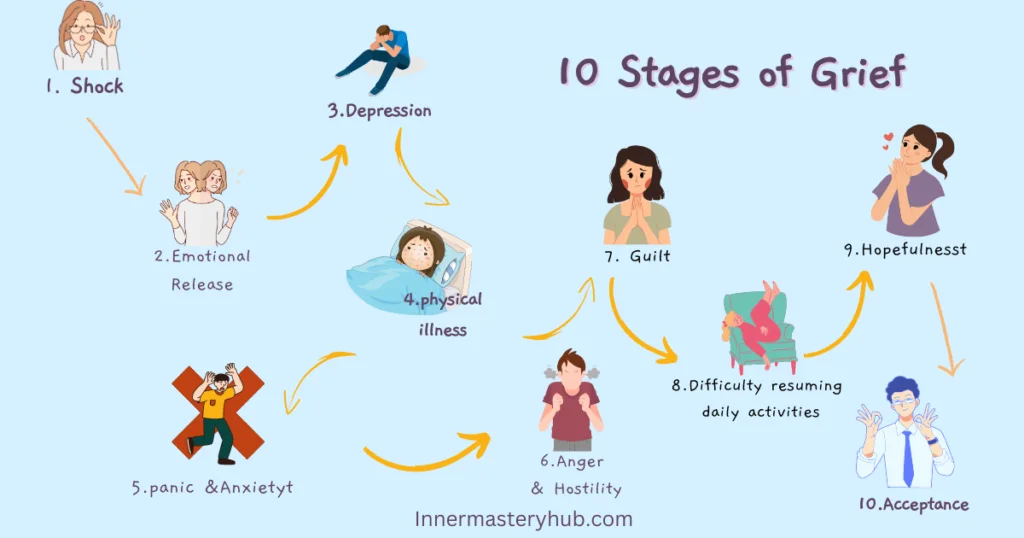
Have you ever stumbled upon a part of yourself you wished you could hide away? We all have aspects of our personality, emotions, and desires that we deem “unacceptable” or “unworthy.”
These hidden facets, often stemming from past experiences, trauma, or societal conditioning, form our shadow selves. But what if we could embrace them using Shadow Work Exercises instead of repressing them? Shadow work exercises can help with self-discovery, personal growth, and self-love. Let’s explore the topic!
RELATED: 5 Shadow Work Books that Will Shine a Light on Your Inner Self
Table of Contents
What is your inner shadow?
Like a secret aspect of oneself that you might not always recognize or see, your inner shadow resides. It comprises ideas, emotions, and memories you may find challenging to face. Think of it as the darker aspect of yourself that you might not always want to acknowledge.
Though it may not always be negative, it cannot be easy to face and comprehend your inner shadow, but it is an essential first step toward self-awareness and personal development.
Imagine always coming across as confident but still having doubts because of past criticism. Your inner shadow hides your fears, which makes you avoid uncertainty. Facing this shadow means being open and vulnerable, encouraging sincerity, and always letting go of the need to look confident.
RELATED: Embracing Quiet Confidence
How does your inner shadow form?
Remember that time as a child when you were scolded without cause? That pain, that sense of being wronged, hid, turning into a stone in your shadow. Or maybe you want to go on trips, but your parents tell you to “stay safe and quiet.” These buried wants become a part of your shadow. As a result, We modified our behaviour to meet our needs and learned how to fit in with the outside world.
One of our basic needs was always in danger when it happened, which may have happened a lot. Did your parents’ disapproval not threaten your basic need for freedom and belonging?
Any part of ourselves that we don’t accept will finally turn against us. The shadow is a group of these parts that are not owned. Practising shadow work exercises can be a great tool in learning these aspects of your personality.
RELATED: Overcoming the “I Hate My Body” Struggle
Where Our Forgotten Parts Go
During the first 20 years of our lives, all the parts of us that were rejected or told no to are grouped and pushed out of sight in our subconscious. We consciously deny them to get rid of them, but we still can’t get rid of them.
We get into trouble when we can’t see it. So, we know for sure that it is standing behind us. Carl Jung called this hiding of parts of ourselves that we don’t want to show the world our “personal shadow.” Your inner darkness could affect how you behave and think without realizing it. Practising shadow work exercises can be a great tool in learning these aspects of your personality.
RELATED: Facts About Self-Confidence And Self-Esteem
The Impact of unowned shadow parts on your behaviors
While our unconscious shadow self takes over, our conscious self goes on autopilot. As a result,
If you fear failure, you may unknowingly put off important duties. This might lead to missing deadlines, starting projects late, or avoiding work.
An unconscious need for validation may cause you to put others’ wants above your own, even daily. This could entail accepting requests you don’t have time for, ignoring your needs, and observing what irritates you.
A severe inner critic can undermine your everyday routine by making you linger on mistakes, doubt your talents, and hesitate to act. Negative self-talk and judgemental behavior can discourage, paralyze, and slow you down. We do things we wouldn’t normally do and then feel bad about them (if we can remember them).
We say things we wouldn’t normally do. The way we respond shows feelings we aren’t aware of. We must be aware of how our actions affect and guide others.
We see things we don’t like about ourselves in other people. It is called projection in psychology. We put onto other people what we keep buried inside ourselves.
Not being aware of the shadow hurts our relationships with spouses, children, and friends. It also hurts our work relationships and makes us self-sabotaging.
RELATED: 3 Subtle Ways Depressed People Self-Sabotage
What Are The Best Shadow Work Exercises For Healing?
Here are The Best Shadow Work Exercises to get healed;
1. Notice the Emotional Reaction
One of the best ways to learn more about your shadow is to pay attention to the triggers that make you think, feel, and act the way you do. As a beginner, Watch out for strong emotional responses and the feelings that come after them, like a tightening in the chest or a punch in the gut.
Strong feelings are the best way to see the shadow. Shadow work exercises like Journaling down the emotions and sensations you notice can help you see patterns.
Accept that your emotions are reasonable in the context of where they came from to validate them. Then, quietly, methodically, and rationally, consider if your feelings are still validating in the context of what caused them.
Once you can see things objectively, there’s a good possibility you’ll realize that the strong emotions you’re feeling are, in fact, illogical. As a result, you will be able to react differently and more clearly in the future for similar situations.
Subscribe to our newsletter!
RELATED: Transformation During a Soul-Crushing Life Crisis
2. Engage in Inner Dialogue
Approach your shadow with curiosity, not blame. Ask gentle questions like, “What are you trying to tell me?” or “What emotions are you holding on to?” Listen patiently and without expectations for the answers.
If your shadow self has power when you ignore it, power is taken away when you address it. When strong emotions arise, engage in conversation instead of ignoring them. These conversations with your shadow frequently involve some degree of shame, maybe because the behavior has a negative aspect. Perhaps it was spiteful or even cruel.
We must pay attention to our shadows to erase their influence, stop them from controlling our actions, and keep our relationships alive. The best practice to converse with your shadow is journaling, which is one of the best shadow work exercises.
RELATED: Understanding Dysregulated Nervous System
3. Analyze Good And Bad traits
We are all given certain titles due to our good habits since childhood. And we take this identity proudly with ourselves later in life.
Produce a list of all of the positive traits that you possess. Afterward, highlight the opposite of that. Please make an effort to recognize the opposite inside yourself.
If you tell yourself that you are disciplined, for instance, you are probably trying to hide the fact that you are lazy. That part that is sluggish is hiding in the shadows.
4. Shadow Archetypes
Robert Moore’s mythic framework is a great place to start when you want to learn more about the shadow. Through his idea of the four main archetypes, each with both good and bad aspects (including the interesting bipolar shadow pairing), we can see our secret sides clearly and understandably.
Here are some more ideas on how to use Moore’s framework to help you work with shadows:
Self-reflection
Each character can make you think about your own life. Like, “When do I exhibit Kingly qualities, and when does the Tyrant or Weakling emerge?” or “How do I express the Magician within, and where might I fall into the Manipulator or Innocent One?”
Observing other people
These archetypes can also help us spot shadow reflections when interacting with others. For example, someone who sets off our Tyrant shadow could be showing their weak sides, and so on.
Knowing our shadow archetypes isn’t about judging them; it’s about fitting in. We can become more whole and grow as people if we recognize and accept each character’s good and bad parts.
RELATED: The Psychology Behind Feeling Personally Attacked and How to Cope
5. The 3-2-1 Shadow Process
The 3-2-1 Shadow Process by Ken Wilber is a great method for addressing and integrating your shadow. With straightforward procedures and a concentration on strong emotional charges, the technique is approachable to novices and encourages deeper inquiry.
Some extra comments on each step:
Step 1: Target Selection
Choosing someone who evokes powerful emotions is amazing. Focusing on those triggering figures naturally draws attention to our shadow’s most active parts.
Do not avoid “darker” feelings like wrath, frustration, or attraction that unconscious projections might drive.
Step 2: Face It
Describing triggers in the third person makes observation more impartial and reduces judgment anxiety.
Freely expressing your emotions without self-censorship is essential for emotional clarity.
Step 3: Talk
In 2nd person, you can confront your projections directly and powerfully.
The suggested inquiries help reveal your shadow’s secret messages and teachings.
Step 4: Embody
Taking on shadow attributes in 1st person is the hardest but most transforming step. By embracing “disowned” qualities, we face them and integrate them.
Your uneasiness indicates that you’re exploring deeper parts of your mind.
Step 5: Re-own and Integrate
We can no longer deny the shadow after witnessing it. Accepting and integrating it into our being begins with this realization.
The three-2-1 Shadow Process is an organized and entertaining way to work with your shadow. It fosters self-awareness, emotional honesty, and personal progress. Shadow work is a journey that leads to fresh discoveries and better knowledge.
6. Shadow Work Meditation
Meditation is a strong way to learn more about yourself and bring those parts together. Take a few deep breaths and close your eyes. This will help your body rest. Imagine that soft light surrounds you, making you feel safe and cared for.
Right now, look inside yourself. Explore your feelings and thoughts slowly and without judging them. Think of a room in your mind. Write down any thoughts, feelings, or pictures that come up. Do not push them away; instead, accept them with kindness.
Pay attention to how a shadow feature makes you feel if it comes into focus. Don’t fight the feelings; just let them come out. During the meditation, keep an open mind and don’t judge others. Remember that this is a way to heal and learn about yourself. Slowly bring your attention back to the present moment when you’re ready. Open your eyes and take a few deep breaths.
7. Shadow Work exercises Affirmations
You can change the way your brain works with affirmations to boost your state of mind, confidence, and self-esteem. In times of worry, they can also calm you down and make you feel better.
- I honour and accept all parts of myself, even those I don’t understand.
- My shadow is a teacher, showing me what needs healing and growth.
- I forgive myself for hiding my shadow and release the shame around it.
- I am healing the wounds that created my shadow, one gentle step at a time.
- I am integrating my shadow, becoming whole, and accepting the beautiful complexity of my being.
Remarks to Conclude
Activities that include shadow work may not be simple. Shadow work takes time; it is often unpleasant to confront your demons and the self-acceptance that you have kept concealed. Accepting your shadow requires bravery and perseverance, but the effort will be worth it as you strive to become the best version. Being patient with yourself and the process and showing grace and compassion are important.
10 shadow work questions to ask yourself?
Shadow work involves exploring the hidden or unconscious parts of yourself to achieve personal growth. Here are 10 questions to help you dive into shadow work:
- What traits in others trigger a strong emotional reaction in me, and why?
- When have I felt intense jealousy or envy, and what does this reveal about my own desires?
- What recurring negative thoughts do I have about myself, and where do they originate?
- How do I react to criticism, and what does this say about my insecurities?
- What aspects of myself do I hide from others, and what am I afraid they’ll see?
- When have I felt ashamed or embarrassed, and what does this teach me about my fears?
- How do I sabotage my own success or happiness, and what underlying beliefs drive this behavior?
- What childhood experiences still impact my emotions and behaviors today?
- What responsibilities or situations do I avoid, and what fears are associated with them?
- How do I project my own unresolved issues onto others, and what can I learn from this?
Shadow work Exercises Quotes:
- In the shadows, we find the unclaimed parts of ourselves. It’s not about judgment but illumination—the light transforming darkness into a mosaic of personal evolution.”
- “Acknowledging your shadows is like opening a door to a hidden garden within. There, amidst the tangled vines, you find the most beautiful, yet forgotten, flowers of your true self.”
- “The shadows within you are not monsters; they are lost fragments seeking integration. Be the compassionate guide that leads them home, and you’ll find the beauty in your wholeness.”
- “Until you make the unconscious conscious, it will direct your life, and you will call it fate.” – Psychologist Carl Jung.
FAQS
Shadow work exercises prompts
Delve into your shadow side with these prompts. Take some time to reflect on recurring fears, identify limiting beliefs, and remember relationship patterns. Examine emotional triggers and unresolved wounds, unraveling the threads of your past and when you feel uncomfortable. These concise questions act as gateways, guiding introspection toward self-discovery and self-compassion and fostering a deeper understanding of the complexities.
Shadow work exercises, journal prompts
Daily Reflections: Explore today’s emotions—what lies beneath the surface?
Trigger Analysis: Examine recent triggers and emotional reactions—what shadows do they cast?
Dream Insights: Capture and decode dreams for glimpses into hidden fears or desires.
Inner Dialogue Check: Scrutinize self-talk for critical thoughts, uncovering connections to your shadow self.
Creative Exploration: Express inner shadows and light through creative outlets.
Shadow work exercises for beginners
Start with journaling daily emotions and exploring triggers and reactions without judgment. Identify recurring patterns, note dreams for insights, and engage in expressive art. Reflect on childhood memories to uncover early shadows. Gradually embrace and understand these aspects, cultivating self-compassion for a transformative journey into self-discovery.
Healing the Inner child as shadow work exercises
Returning to your inner child helps you understand how your early experiences shaped your shadows. Self-compassion grows when you accept and fix the hurt parts of yourself. Including the inner child in shadow work shows the deep connection between past hurts and present shadows. This makes it possible to heal, learn about yourself more, and feel a sense of wholeness.
Are there specific exercises for addressing childhood trauma through shadow work?
Identifying and confronting negative thought patterns, writing to examine repressed emotions, practicing mindfulness to stay present, and seeking therapy help are some of the exercises that may be included in shadow work to address childhood trauma. Developing self-compassion, self-reflection, and artistic expression are essential strategies for overcoming the effects of childhood trauma.
How long does it typically take to see results from shadow work?
The time people take to see the effects of their shadow job varies greatly. It could take a few weeks for some people to detect results, while it might take months or even years for others. Though it’s a very personal process, self-reflection, therapy assistance, and consistent practice can all help promote healing and positive transformation over time.
Can shadow work help with anxiety and depression?
Shadowwork can help with both anxiety and sadness. People may be able to understand the causes of their mental health problems by exploring and integrating repressed feelings, figuring out limiting beliefs, and becoming more self-aware. Working with a therapist can help you heal and feel better emotionally by giving you advice and support as you do shadow work.
Are there any shadow work apps or online tools available?
Exploring popular platforms like Headspace, Insight Timer, or Calm is recommended, and considering related practices or guided meditations within those apps is recommended. Additionally, new tools and resources may have been developed since my last update, so checking app stores or online platforms for the latest options is advisable.
How do I deal with resistance or fear that may come up during shadow work?
There is nothing wrong with facing pushback or fear during shadow work. Be patient and kind to yourself as you deal with it. Break the process into smaller steps and talk to a doctor or someone you trust. Writing in a journal, being mindful, and recognizing your feelings can all help you get through tough times and help you explore your shadow self safely and gradually.
How does one identify their shadow self?
Self-reflection and awareness are needed to find the dark self. Pay attention to trends that keep happening, things that make you feel bad, and things you deny or don’t like about yourself. Look into your childhood memories, dreams, and disagreements with other people to find hidden themes. Self-reflection, writing in a notebook, and asking for feedback from others can help you find and integrate parts of your shadow self.
How can I integrate shadow work into my daily routine?
Integrating shadow work into your daily routine involves consistent self-reflection and mindfulness. Start with short periods of quiet introspection, journaling about emotions, and identifying patterns. Incorporate mindfulness practices like meditation. Set aside time for self-compassion and embrace positive and challenging aspects of yourself. Regularly check in on your progress and consider seeking professional support if needed.
What are common challenges faced during shadow work?
When doing shadow work, it can be hard to face repressed feelings and uncomfortable truths and resist change. There may be fear of being judged, embarrassed, or denied. The process can be very hard on your emotions, so you need to be patient and kind to yourself. It’s tricky to figure out how to integrate shadow elements without getting too overwhelmed. Getting help from a professional can be helpful.






